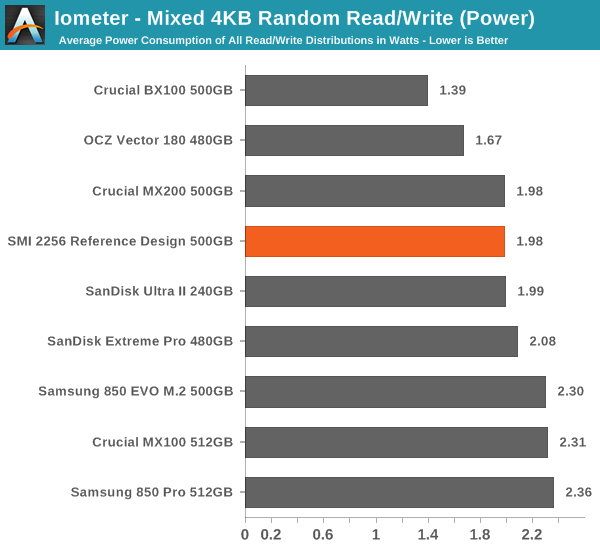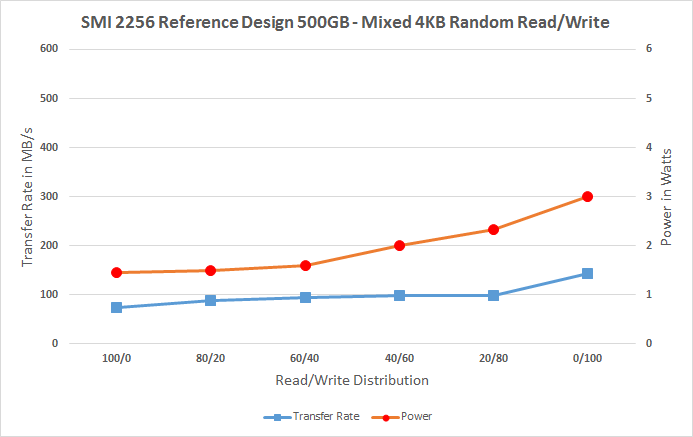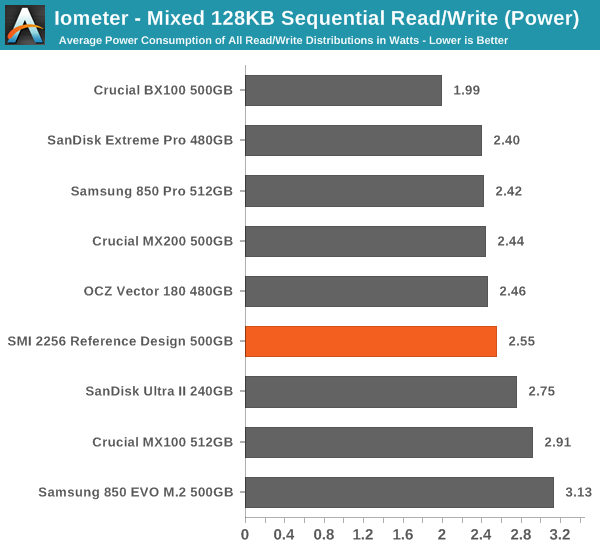Silicon Motion SM2256 SSD Controller Preview: TLC for Everyone
by Kristian Vättö on June 17, 2015 8:15 AM EST- Posted in
- Storage
- SSDs
- TLC
- Silicon Motion
- SM2256
Mixed Random Read/Write Performance
For full details of how we conduct our Iometer tests, please refer to this article.

Mixed random performance is slightly below the average, but not catastrophic, and power efficiency appears to be rather good.

Where the SM2256 loses is in write performance, because performance is on par with the SM2246EN before moving to 20/80 and pure writes.
 |
|||||||||
Mixed Sequential Read/Write Performance

Mixed sequential test seems to separate the planar TLC drives from the rest because both the SM2256 and Ultra II are at the bottom. The SM2256 is higher performance and more power efficient than the Ultra II, though, but it can't keep up with the MLC drives.

Again it's the write performance where the SM2256 loses to its MLC competitors because instead of having a bathtub-like curve the performance pretty much just decreases as the share of writes increases and evens out after 40/60.
 |
|||||||||










34 Comments
View All Comments
Oxford Guy - Saturday, June 20, 2015 - link
Apple reportedly abandoned TLC because of the defects.serndipity - Saturday, June 20, 2015 - link
Have noticed that, as the NAND manufacturers shrunk the die process, issues with both MLC and TLC based SSDs have begun surfacing.Glad to see that Samsung, with its 3D NAND technology, used in the 850 PRO and 850 EVO, has been able to return to a much more stable process size (e.g. almost 3X that of current MLC).
viktorp - Thursday, July 2, 2015 - link
TLC NAND isn’t welcome at any price.Ask yourself simple question – what parts of your personal data will you trust to storage designed specifically to have 10 times less endurance than technology it is supposed to replace (MLC).
I am upset just thinking that someone thought of it as being a good idea.
cbjwthwm - Thursday, September 3, 2015 - link
The big problem here is a newer gen product at 2x the capacity of the equivalent architecture Sandisk Ultra II which for the most part gets outperformed by it. It would be interesting to see what the shipping firmware of this type of product eventually performed like compared to the reference design, but otherwise I see no reason to consider this vs the Marvell-based Ultra II.